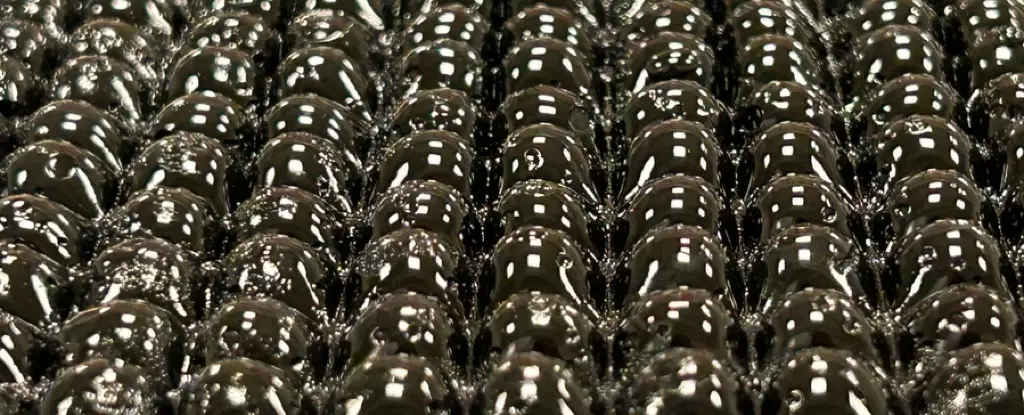Water scarcity is arguably the defining crisis of our time, impacting billions globally with devastating effects on health, economic development, and social stability. The ingenuity behind the new black “bubble wrap” atmospheric water harvester represents a striking advance in environmental engineering: a passive device that extracts drinkable water from the air without using electricity or solar power. Tested in Death Valley, one of the planet’s driest regions, it has demonstrated an ability to yield over 50 milliliters of water per day—a seemingly modest amount, yet one that could be life-changing if scaled correctly.
This invention leverages a novel hydrogel composed of polyvinyl alcohol, lithium chloride, glycerol, and black ink to both attract and retain moisture from atmospheric air. The material’s structure is cleverly designed to maximize surface area while preventing the leakage of salts, ensuring the water collected is safe for consumption. The potential to sidestep traditional energy-intensive water purification and transport systems is tantalizing, especially in regions plagued by infrastructure deficits. However, there are reasons to be cautious before declaring this technology a panacea.
Promises Shadowed by Practical Challenges
While the concept itself is groundbreaking, the actual volume of water harvested—half a shot glass daily—is barely sufficient even for minimal drinking requirements. Scaling this technology to meet the needs of millions depends on factors that extend far beyond materials science. The issue is not simply engineering better hydrogels; it is about integrating these devices into complex ecosystems plagued by poverty, political instability, and infrastructural inadequacies.
Moreover, the reliance on lithium chloride and other chemicals, despite being confined within the hydrogel, raises questions about sustainability and long-term safety. Lithium extraction is environmentally costly, and its increased use in such devices may inadvertently shift the ecological burden rather than eliminate it. This echoes a common theme in “green” technologies: promising in the lab but fraught with unintended consequences when deployed at scale.
The testing environment—harsh as it is—does not fully simulate diverse climatic and air quality conditions globally. The water yield depends heavily on relative humidity fluctuations; in desert or urban areas with polluted air, performance may drop significantly. Additionally, the cost and ease of manufacturing and maintaining these devices in resource-poor areas remain uncertain. Without affordable maintenance and distribution networks, this technology risks becoming another impressive but inaccessible innovation, reminiscent of many high-tech solutions that fail to reach those who need them most.
Beyond Technology: The Social and Political Dimensions
A purely scientific breakthrough, while necessary, is insufficient to resolve the water crisis. Unlike centralized water treatment plants or infrastructure projects, decentralized technologies like this harvester compel us to rethink our assumptions about water access and equity. However, such decentralization risks further fragmenting water governance and complicating regulatory oversight.
Access to safe water is a deeply political issue. Solutions must navigate issues of land rights, community involvement, and governance frameworks that ensure sustainability and fairness. There is a danger that technologies like this could be touted as techno-fixes, deflecting attention from the systemic issues such as climate change mitigation, environmental justice, and infrastructure investment.
From a center-liberal perspective, we should welcome innovation but insist on robust public policies steering the deployment of these technologies in ways that prioritize the most vulnerable populations. This should include subsidies, training, and participatory models for implementation to prevent the widening of inequalities.
Redefining Innovation with a Focus on Impact
The “bubble wrap” water harvester is a fascinating example of how materials science can inspire new environmental solutions. Yet, it must be approached critically, beyond the allure of novelty and laboratory achievements. Technologies like this highlight a key lesson: innovation divorced from social context risks becoming a trivia of science rather than a tool for justice.
If these devices are to truly transform lives, they must be embedded in a larger framework of water rights, climate justice, and infrastructural equity. Only then can the small drops pulled from thin air become part of a tidal wave of progress toward universal safe water access—not merely a technological marvel admired in academic circles or national labs.


Leave a Reply